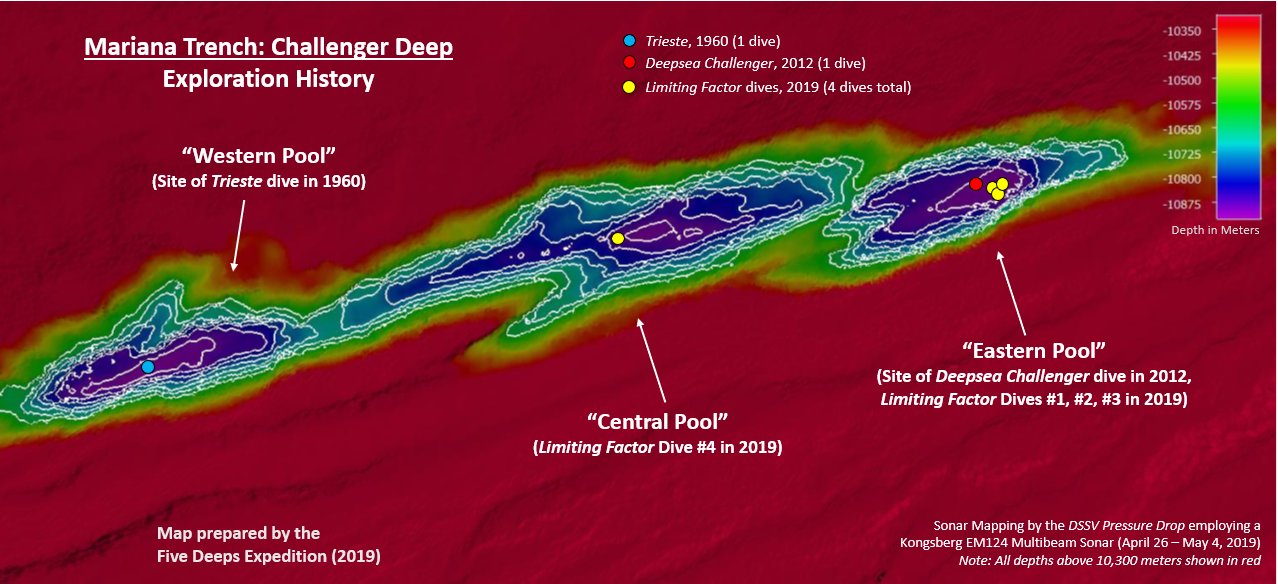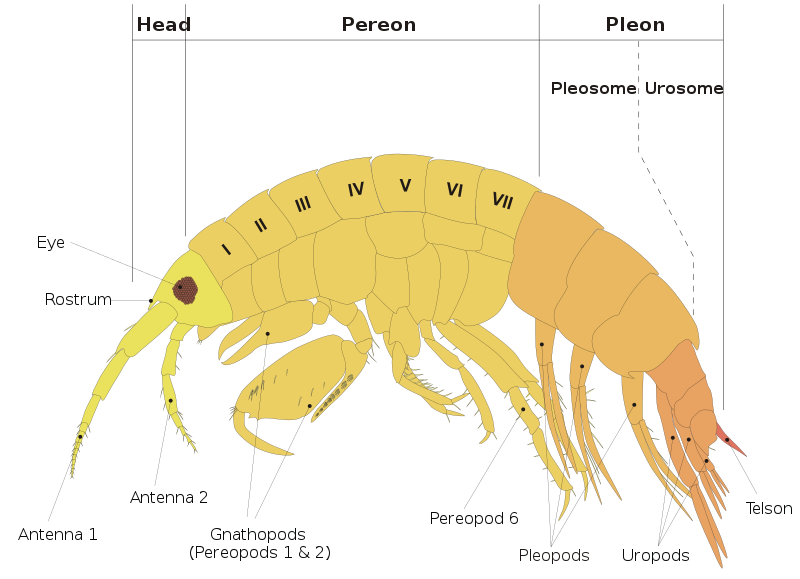AnnCNN wrote:
Just eight people have reached Challenger Deep, the deepest point of the ocean. More than 550 people have visited space.
But only one person has done both: Kathy Sullivan.
On Sunday, the NASA astronaut and oceanographer visited Challenger Deep, which sits at a depth of 10,928 meters (35,853 feet) in the western Pacific Ocean, as part of the Ring of Fire Expedition organized by bespoke adventure company EYOS Expeditions and undersea technology specialist Caladan Oceanic.
Ahead of the expedition, EYOS invited three intrepid explorers, which they call "Mission Specialists," to venture to the bottom of the Mariana Trench, where Challenger Deep is located.
...
"Two things are really distinctly different in the experience of going out into space or going down into the ocean. One is energy intensity. I mean, you're basically riding a bomb when you strap onto a rocket and launch off the planet. It's hugely energetic, loud, noisy, lots of acceleration."
But heading into the deep sea, she says, is like "a magic elevator ride."
"It's very, very serene, she says. "You're not in some clumsy spacesuit; you can basically be in street clothes if you wanted to. And it's this slow, smooth, steady descent."
CNN: Former astronaut becomes first person to visit both space and the deepest place in the ocean
CNN: Former astronaut becomes first person to visit both space and the deepest place in the ocean
Color Commentator
- neufer
- Vacationer at Tralfamadore
- Posts: 18805
- Joined: Mon Jan 21, 2008 1:57 pm
- Location: Alexandria, Virginia
amphipods and sea cucumbers
https://en.wikipedia.org/wiki/Challenger_Deep wrote: <<The Challenger Deep is the deepest known point in the Earth's seabed hydrosphere (the oceans), with a depth of 10,902 to 10,929 m by direct measurement from deep-diving submersibles. The Challenger Deep is located in the Western Pacific Ocean, at the southern end of the Mariana Trench near the Mariana Islands group..
The depression is named after the British Royal Navy survey ship HMS Challenger, whose expedition of 1872–1876 made the first recordings of its depth. The first descent by any vehicle was by the manned bathyscaphe Trieste in January 1960. In March 2012 a manned solo descent was made by film director James Cameron in the deep-submergence vehicle Deepsea Challenger. Between 28 April and 4 May 2019, the DSV Limiting Factor completed four manned dives to the bottom of Challenger Deep.
The Challenger Deep is a relatively small slot-shaped depression in the bottom of a considerably larger crescent-shaped oceanic trench, which itself is an unusually deep feature in the ocean floor.>>
https://www.newyorker.com/magazine/2020/05/18/thirty-six-thousand-feet-under-the-sea wrote:
<<Outside the viewports, Victor Vescovo saw amphipods and sea cucumbers. But he was two miles beyond the limits of fish. “At a certain point, the conditions are so intense that evolution runs out of options—there’s not a lot of wiggle room,” Jamieson said. “So a lot of the creatures down there start to look the same.”
“The amphipod samples are mostly for genetic work, tracking adaptations,” he told me. The same critters were showing up in trenches thousands of miles apart—but aren’t found in shallower waters, elsewhere on the ocean floor. “How the f*** are they going from one to another?”
Vescovo switched off the lights and turned off the thrusters. He hovered in silence, a foot off the sediment bottom, drifting gently on a current, nearly thirty-six thousand feet below the surface.>>
https://en.wikipedia.org/wiki/Amphipoda wrote: <<Amphipoda is an order of malacostracan crustaceans with no carapace and generally with laterally compressed bodies. Amphipods are mostly detritivores or scavengers. There are more than 9,900 amphipod species so far described. They are mostly marine animals, but are found in almost all aquatic environments. The name Amphipoda comes, via the New Latin amphipoda, from the Greek roots ἀμφί ("different") and πούς ("foot"), in reference to two kinds of legs that amphipods possess. This contrasts with the related Isopoda, which have a single kind of thoracic leg. Particularly among anglers, amphipods are known as freshwater shrimp, scuds or sideswimmers.
Amphipods are typically less than 10 millimetres (0.4 in) long, but the largest recorded living amphipods were 28 centimetres (11 in) long, and were photographed at a depth of 5,300 metres in the Pacific Ocean. Samples from the Atlantic Ocean with a reconstructed length of 34 centimetres (13 in) have been assigned to the same species, Alicella gigantea. The smallest known amphipods are less than 1 millimetre (0.04 in) long. The size of amphipods is limited by the availability of dissolved oxygen, such that the amphipods in Lake Titicaca at an altitude of 3,800 metres can only grow up to 22 millimetres (0.87 in), compared to lengths of 90 millimetres (3.5 in) in Lake Baikal at 455 metres (1,500 ft).
Amphipods are thought to have originated in the Lower Carboniferous. Despite the group's age, however, the fossil record of the order Amphipoda is meagre, comprising specimens of one species from the Lower Cretaceous (Hauterivian) Weald Clay (United Kingdom) and 12 species dating back only as far as the Upper Eocene, where they have been found in Baltic amber.
Amphipods are found in almost all aquatic environments, from fresh water to water with twice the salinity of sea water and even in the Challenger Deep, the deepest known point in the ocean. They are almost always an important component of aquatic ecosystems, often acting as mesograzers. In populations found in Benthic ecosystems, amphipods play an essential role in controlling brown algae growth. The mesograzer behaviour of amphipods greatly contributes to the suppression of brown algal dominance in the absence of amphipod predators. Amphipods display a strong preference for brown algae in Benthic ecosystems, but due to removal of mesograzers by predators such as fish, brown algae is able to dominate these communities over green and red algae species.
The landhoppers of the family Talitridae (which also includes semi-terrestrial and marine animals) are terrestrial, living in damp environments such as leaf litter. Landhoppers have a wide distribution in areas that were formerly part of Gondwanaland, but have colonised parts of Europe and North America in recent times.>>
Art Neuendorffer



